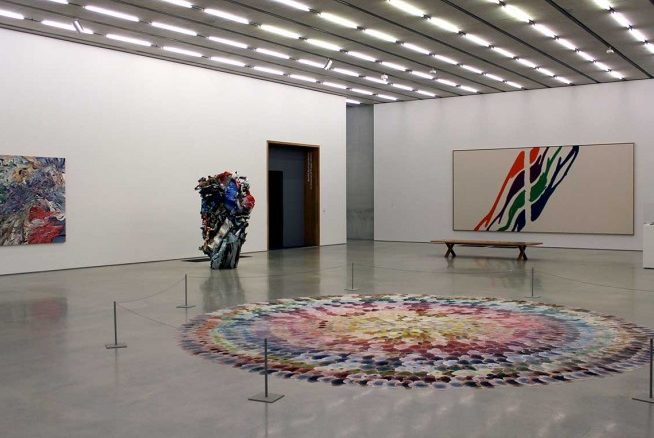
Routes of Influence consists of six thematic presentations of works from the permanent collection, positioned within two galleries on the first floor and four galleries on the second floor. These Overview Galleries form a conceptual spine running through the building, continually placing collection works in visual dialogue with the exhibitions and projects presented in the museum’s additional galleries.
Inspired by Miami’s position as a hub of diverse flows of people, ideas, and art histories, this exhibition juxtaposes artworks in a manner that maps how aesthetic concepts move fluidly across traditional, national or cultural lines, how “influence” in art is understood today as multi-directional, rather than linear in character. Specifically exchanging the notion of “roots” for “routes,” this presentation emphasizes trajectories over origins in its interpretation of these artworks, how meaning is not limited to the context in which each work was produced, but expands as it is put into dialogue with the other works on display. Each thematic gallery highlights the ways in which particular forms, narratives, or political ideas migrate between artworks. Additional pieces selected involve journeys referenced by artists working across diverse parts of the world.
Shifting Cartographies
Diagrams, engineering drawings, and geographical maps are several of the references that connect the works in this gallery. Traditionally associated with construction and industry, these forms evoke notions of modernization, development, and progress, and relate to Constructivism, which originated in the early 20th-century Russian avant-garde. The abstracted forms these works present are shown in various states of flux, involving movement, fragmentation, or dissolution. Through these devices, the artists represented address various contemporary structural shifts involving ideologies in transformation—from evolving emotional states to economics systems, potential utopias, or global migrations.
Perceptive Geometries
The works in this gallery involve geometric forms that engage the perceptive capabilities of the viewer. Presenting cubes, lines, and bands of color in compositions that emphasize the repetition of these elements, the scale and placement of these artworks actively interact with the viewer’s body. They demand that viewers navigate among or around them as they seek the various views and effects the pieces generate. This gallery includes works that are directly related to Minimalism and Conceptualism, art movements from the 1960s and ‘70s that sought to stimulate the viewers’ awareness of themselves interacting with the works presented in a museum or gallery context. Use of industrial materials, reflective surfaces and seriality are some of the strategies used by this previous generation and referenced by the younger artists also on view.
Ideological Circuits
The works exhibited in this gallery address intersections between commodities, advertising, and transnational politics. They reference the tradition of Pop Art, which began in the 1960s, with artists appropriating images and objects from popular culture—from billboards, magazines, and television. Since the Cold War period, many US consumer brands and products, such as Coca-Cola or Mobil Oil, have been seen as symbols of not only the country’s innovation and marketing, but of ideologies related to the expansion of its political and economic interests internationally. Several artists address these and related dynamics, mapping strategies that highlight and subvert the commercial and advertising systems through which these products and ideas circulate, transforming these ideological circuits into tools of political critique and alternative messaging.
Critical Gestures
The collection works in this gallery each dialogue with legacies of painterly abstraction, specifically Abstract Expressionism, which strongly influenced artistic production in the post-World War II period in the United States. Abstract Expressionism emphasized the significance of the painted mark on a canvas, identifying multiple meanings to this action—as an expression or trace of the movement of the artist’s body, as a depiction of the emotional, spiritual or psychic state of the artist or as a pre-linguistic sign system. The artworks installed here critique this tradition in diverse ways—through the use of alternate tools, instead of a paint brush, in placing paint on canvas, through experiments with the thickness of paint, or through the implementation of systems, materials or processes that counter the immediacy and spontaneity historically associated with gestural painting.
Ornament and Identity
This gallery addresses how ornamentation has historically been used as a symbol of status, power, and self-identification. The artworks exhibited reference patterns and motifs taken from a variety of historical sources, including 18th and 19th century Indian, Chinese, and European decorative arts, architecture, and portraiture. These elements are combined in diverse ways that speak to hybridity within contemporary culture, how individuals today often navigate multiple cultural identities simultaneously, and critique complex histories of representation.
Off the Grid
The artworks in this gallery play off of grid structures in diverse ways. Since early Modernism and with increased emphasis in the 1960s and 70s within Minimalism and Conceptualism, grids have been engaged as anti-natural forms, as structures related to mathematics, science, and reason. Several artists presented in this gallery embrace these references, presenting cool geometries that incorporate the flat, rectilinear ordering of two-dimensional grids, as well as the related forms of three-dimensional cubes. Works by other artists challenge these traditional references, through combining gestural, tactile or natural elements with this structure, softening and altering both the grid and its significance.
Read on PAMM

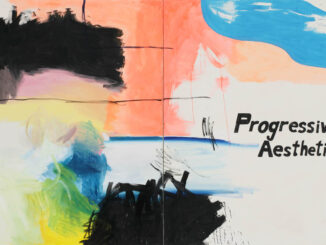
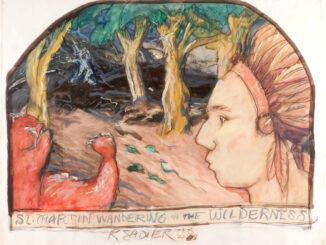
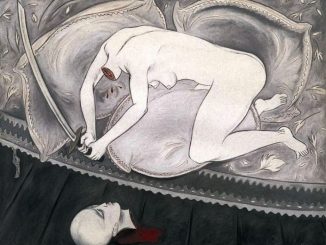
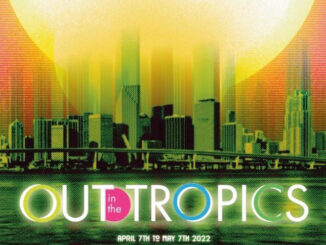
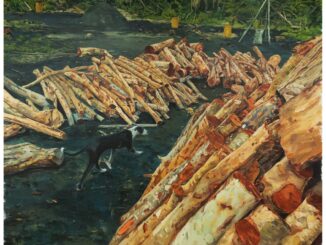

Be the first to comment